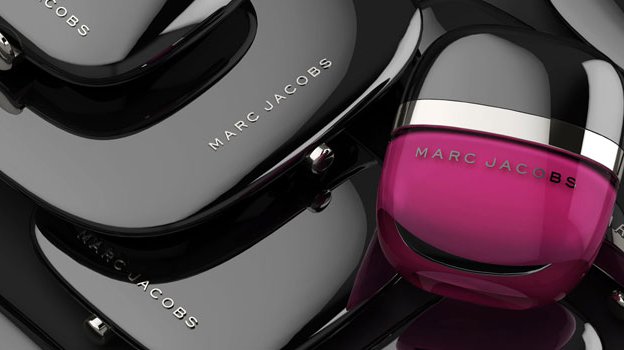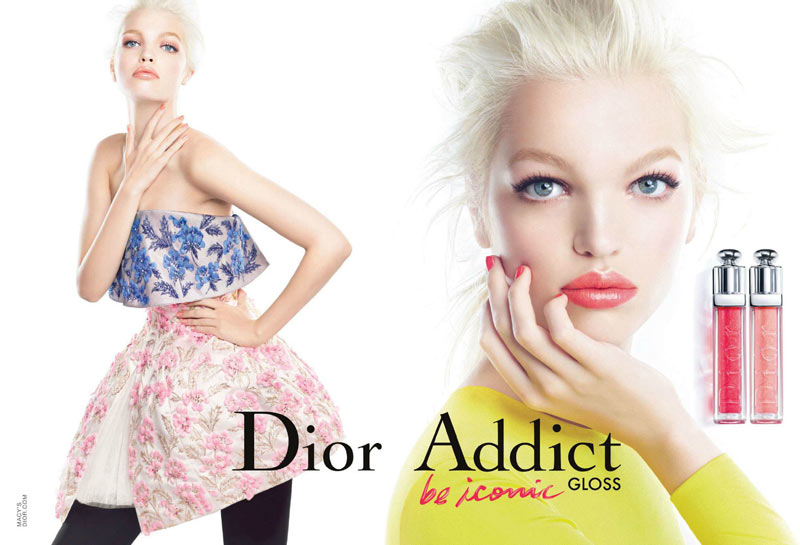Sophie Maxwell, Insight Director at Pearlfisher, explores the desire for luxury cosmetics and the role beauty will play in the future evolution of the luxury landscape

Sophie Maxwell, Insight Director at Pearlfisher, explores the desire for luxury cosmetics and the role beauty will play in the future evolution of the luxury landscape
Newly launched cosmetics by Marc Jacobs
When Marc Jacobs released five products from his highly anticipated new beauty line ahead of the planned August launch date, the pre-launch noise appeared to be mostly driven by (increasingly powerful) beauty bloggers.
But, these products sold out immediately in Sephora stores around the country. Such news is a clear indicator of not just the growing importance of cosmetics but of the desire for luxury cosmetics and the future evolution of the luxury landscape.
Most major luxury brands have made – or are making – a foray into beauty or personal care in some way due to the massive cultural and commercial opportunity it affords. It is seen as both an accessible and affordable way to generate a potentially new audience with mass on-going revenue.
After all, you are likely to replace your mascara more than seasonally and buy more colourways in lipstick than coats.
“ You are likely to replace your mascara more than seasonally and buy more colourways in lipstick than coats ”
The challenge for luxury brands, however, is to both keep up with today’s product formulations and to balance this with a desired and differentiated design aesthetic that captures the designer’s ethos and inimitable self-expression.
Marc Jacobs is, of course, the king of diversification and has already brought luxury to the masses in many different guises without disrupting the brand and its desirability. (This new make-up launch follows hot on the heels of his sixth fragrance launch, Honey, the latest in a massively successful, category-disrupting range).
Tom Ford is also already maximizing the success of his cosmetics line with the launch of a Men’s’ collection this fall. And with Gucci rumoured to be launching a personal care line in 2014, L’Oreal expanding into China, and D&G;’s glamorous range of cosmetics entering airports, the market is becoming ever more diversified and saturated.

Tom Ford Beauty
There is obvious demand from consumers for new and innovative cosmetics lines and the pressure is on the designer and luxury brands to meet these expectations. But just because they can, doesn’t mean they should.
The competitive nature of the market and the opportunity to say something new and meaningful within a hotly competitive environment does not make for guaranteed success. Even successful icons like Michael Kors and Diane von Furstenberg have failed to replicate their desirability and gain traction with their cosmetic extensions by missing the mark and not connecting with consumers.
But what can make or break an entry into make-up? It’s interesting to note that Jacobs steered his initial launch through Sephora’s doors. With sales of other luxury brands such as Vuitton reportedly slowing down for the luxury behemoth, LVMH is – sensibly – hedging its bets with a no-nonsense route to market through what is being referred to as ‘the Sephora effect’.
“ As luxury goods sales slow, beauty products are becoming the primary tool for attracting aspirational consumers ”
As luxury goods sales slow, beauty products are becoming the primary tool for attracting aspirational consumers, says Exane BNP Paribas analyst Luca Solca.
And with a lipstick costing a hundredth of the price of a Vuitton handbag and a thousandth of a Hublot watch, he rightly identifies that, “Fragrances and cosmetics are the luxury of the masses.”
Luxury cosmetics are now a key way for designers to evolve their brand, but you still need the right product and the right approach. It’s not just about wanting a new channel of innovation or brand extension, nor is it solely reliant on which retailer you sell through, or where.
It’s about the expertise of top brands looking to offer a more unique, considered and dynamic beauty experience – and creating true innovation and design difference to revere and reflect this.

Hair Colourist Josh Wood’s Atelier
And we have already seen how this is working in the hair care sector. Josh Wood is one of the world’s most influential and respected hair colourists and style opinion formers. Launching an Atelier at the end of last year as the chosen place of expertise in which to offer bespoke level craftsmanship, Wood was looking to optimize and offer a new level of experience and intimacy to his consumers.
This subtle shifting of the brand’s profile and emphasis reflects a true understanding of the consumer’s long-term personal requirements and desires and is the opportunity to establish a long-term relationship.
In a world of increasingly competitive mass brand expansion it’s also about looking for select and truly apposite ways to share expertise and redefine the offer in a controlled way to create a feeling of quintessentially personal choice and true specialness.
“ Luxury cosmetics are now a key way for designers to evolve their brand, but you still need the right approach ”
Once luxury brands were like our icons and role models for beauty – static and unattainable ideals, fervently adored and emulated from afar. But the new persona of our celebrity role models is one our designers and luxury brands need to emulate which is about never standing still and constantly re-examining, reconstructing and redefining.
As Marc Jacobs said of his new eyeliner, “Black is black, but it’s what you do with black that makes it interesting.”
From the start, of course, the focus of the cosmetics industry has always been about giving the consumer the power to experiment, interact and express individuality. But, now, as we kick back against conformity, we are looking to beauty brands to help facilitate a new world that is not just about personalization and co-creation but plays to a new level of independence and freedom with the creation of ever more unique, individual and inspiring expressions.
Xavier Vey, President of Lancôme U.S was recently quoted as saying, “The real luxury of today is not what has always been done. It is newness.”

Dior Addict Campaign
The cosmetics sector is undoubtedly helping luxury brands embrace newness and innovate outside of traditional channels. But, in turn, these luxury leaders must boast a strong design aesthetic reflective of the heart of their brand.
Finding new ways to express cosmetics through the lens of luxury brands is helping pave the way for future brand and design concepts which will impact and influence on cosmetics, luxury and beyond. With this in mind our own spin on the future of luxury would be that, “The real luxury of today goes beyond choice of brand to inspiring true confidence in our ultimate individuality.”
To further investigate branding and marketing on Luxury Society, we invite your to explore the related materials as follows:
– Experiencing Luxury: From Digital to Dynamic
– How Premiumisation Has Made The Impossible Dream of Luxury Possible
– The Art of Luxury Brand Design: The Unsung Hero?










